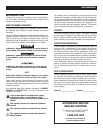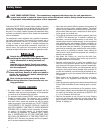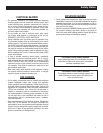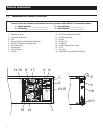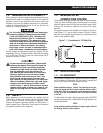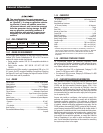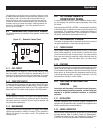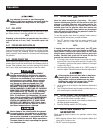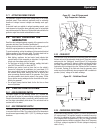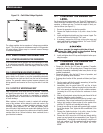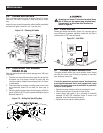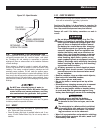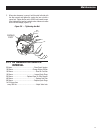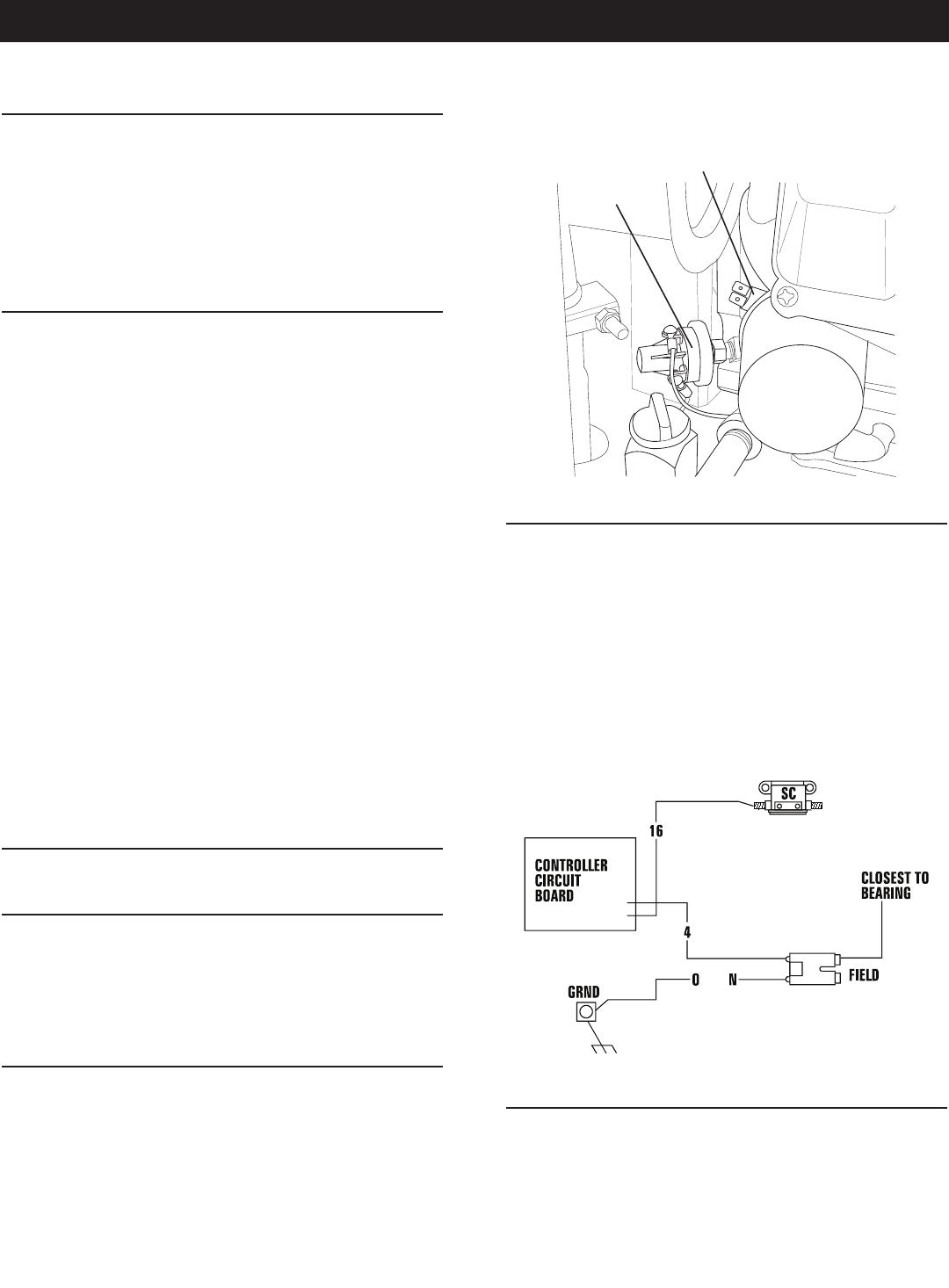
9
2.7.1 LETTING THE ENGINE STABILIZE
The generator supplies correct rated voltage only at the proper
governed speed. Some electrical appliances may be extremely
sensitive to voltage. Incorrect voltages can damage such appli-
ances.
If electrical loads are applied at reduced operating speeds, such
loads imposed on the engine when sufficient power is not available
may shorten engine life. Never turn ON electrical loads until after the
generator engine has started and stabilized at no-load.
2.8 DO NOT OVERLOAD THE
GENERATOR
Read the rated wattage/amperage capacity of the generator on the
generator data label (see "Generator Identification").
Applying electrical loads in excess of the unit’s rated capacity will
cause the engine/generator to automatically shut down.
To avoid overloading, add up the wattage of all connected electrical
lighting, appliance, tool and motor loads. This total should not be
greater than the generator’s rated wattage capacity.
Most lighting, appliance, tool and motor loads indicate their •
required watts on their nameplate or data plate. For light bulbs,
simply note the wattage rating of the bulb.
If a load does not show its rated wattage, multiply that load’s •
rated VOLTS times AMPS to obtain WATTS.
Induction type motors (such as those that run the vehicle’s •
furnace fan, refrigerator, air conditioner, etc.) need about 2-1/2
time more watts of power for starting than for running (for a
few seconds during motor starting). Be sure to allow for this
when connecting electrical loads to the generator. First, figure
the watts needed to start electric motors in the system. To that
figure, add the running wattages of other items that will be oper-
ated by the generator.
Do not apply heavy electrical loads for the first two or three •
hours of operation.
2.9 PROTECTION SYSTEMS
2.9.1 LOW OIL PRESSURE SWITCH
This switch (Figure 2.2) has normally closed (N.C.) contacts that
are held open by engine oil pressure during cranking and operating.
Should oil pressure drop below a preset level, switch contacts close,
and the engine automatically shuts down. The unit should not be
restarted until oil is added.
2.9.2 HIGH TEMPERATURE SWITCH
This switch (Figure 2.2), which has normally open (N.O.) contacts,
is mounted near the oil filter. The contacts close if the temperature
should exceed approximately 305º F (152º C), initiating an engine
shutdown.
Figure 2.2 – Low Oil Pressure and
High Temperature Switches
High Temperature Switch
Low Oil Pressure
Switch
2.9.3 FIELD BOOST
The Controller Circuit Board houses a field boost diode and resistor
that are not part of the automatic choke circuit. These two compo-
nents are part of a “field boost” circuit (Figure 2.3). During engine
cranking only, a positive DC (battery) voltage is delivered through
the diode, resistor, brushes and slip rings, to the generator rotor.
Application of this voltage to the rotor “flashes the field” whenever
it is started. Flashing of the field each time the generator starts
makes sure that a sufficiently strong magnetic field is available to
produce “pickup” voltage in the stator windings.
Figure 2.3 – Field Boost Circuit
2.9.4 OVERVOLTAGE PROTECTION
A solid-state voltage regulator (Figure 2.4) controls the generator’s
AC output voltage. This regulator supplies an excitation current to
the rotor. By regulating the rotor’s excitation current, the strength
of its magnetic field is regulated and, in turn, the voltage delivered
to connected electrical loads is controlled. When the AC frequency
is 60 Hertz, voltage is regulated at 120 volts (voltage-to-frequency
ratio is 2-to-1).
Operation



